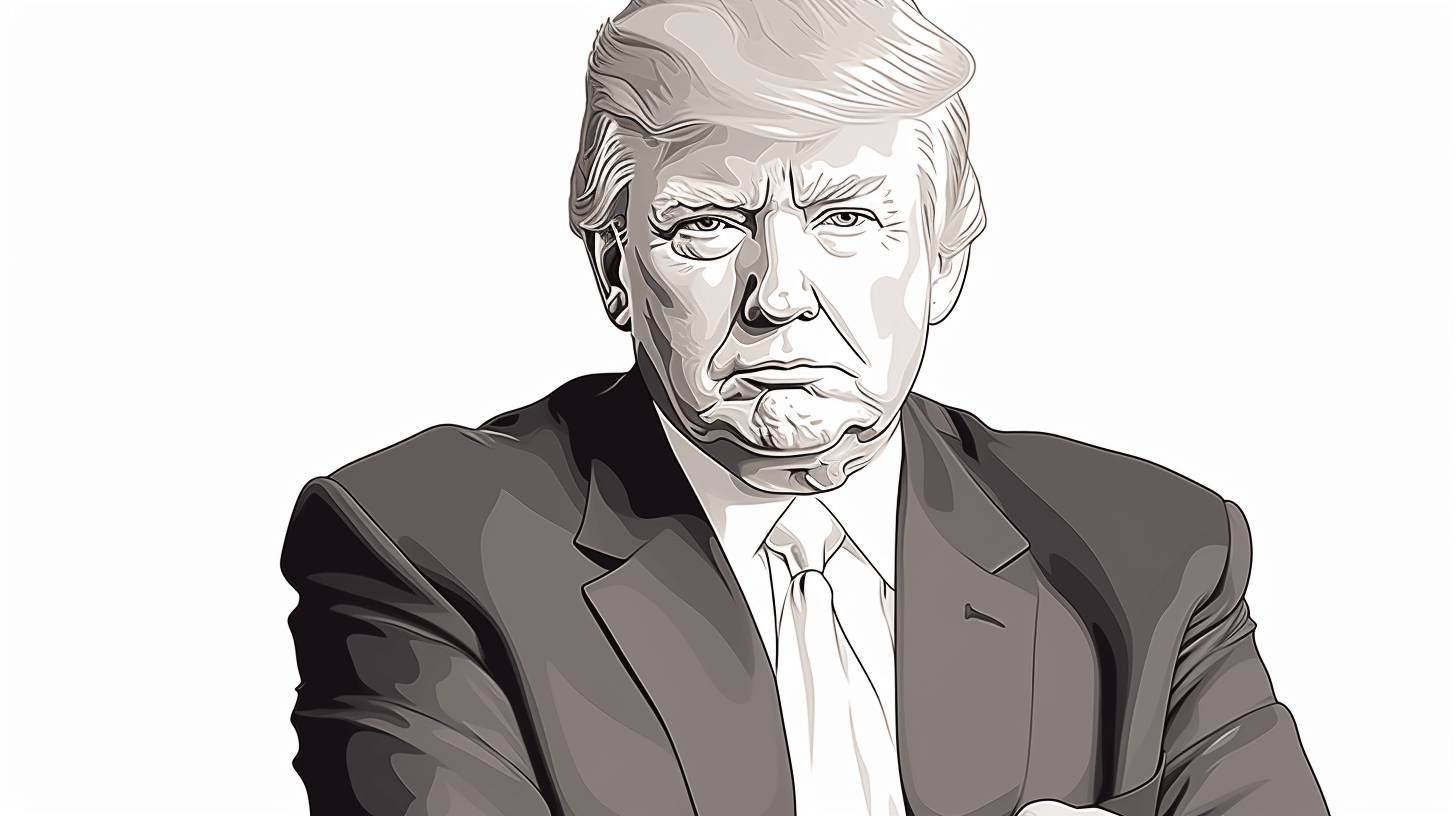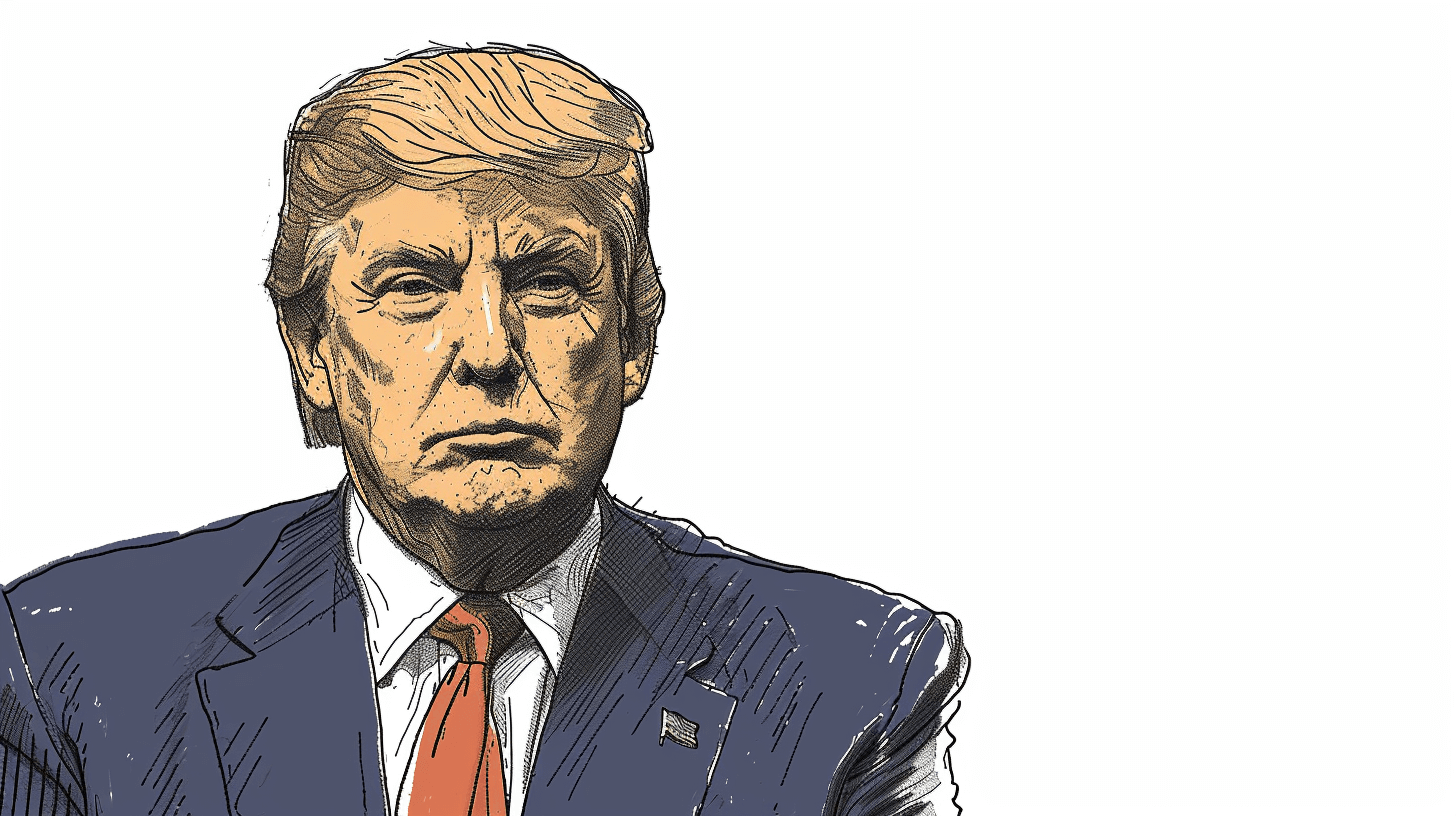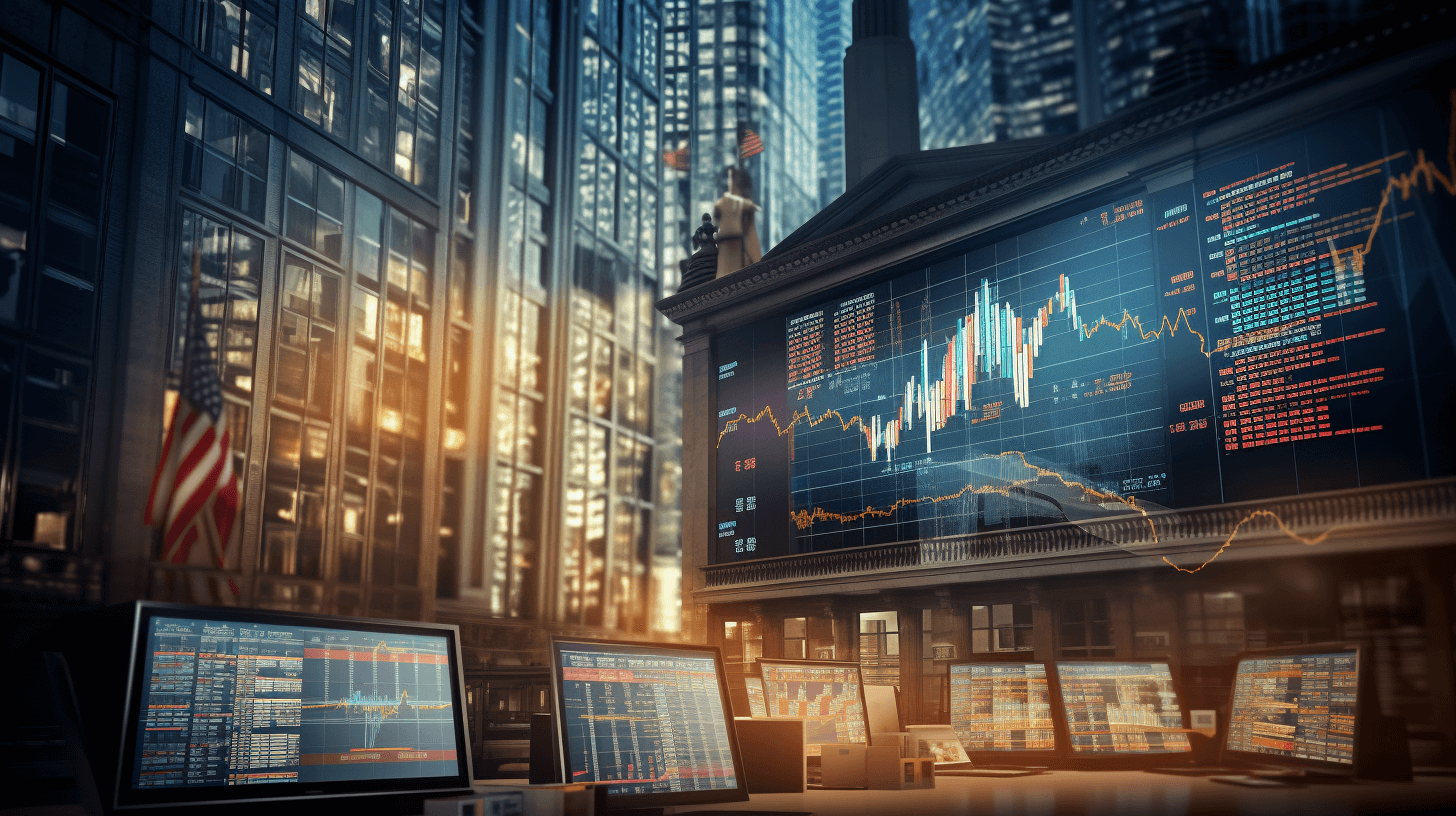😕💰🔥 Inflation Battle: We Stay Winnin’? No Be So Fast, Brah!
Inflation, dis buggah bin start come down from its crazy peak back in 2022, but da smart money guys, da economists, still get choke worry ’bout how stubborn dis buggah stay.😬💹
For us local guys, inflation look like finally chilling out small kine. Gas, she stay more cheap, eggs cost about half of wat dey did in January, and da prices no go up so fast across all kine products. 🥚⛽️📉
But one big shot guy still no look all happy and relieved: Jerome H. Powell, da boss of da Federal Reserve.💼🏦
Da Fed guys, dey been fighting one mean kine battle against inflation for da past 15 months. Dey wen raise da interest rates above 5 percent fo’ try bring down da price increases to one more normal level. Last week, dey wen announce dey no going raise rates dis June, giving themselves more time fo’ see how da changes dey already wen make going affect da whole economy.🕑💸
But Mr. Powell, he wen say it’s too early fo’ claim victory in da fight against dis fast price increases. Da reason why: while gas stay cheaper and da price adjustments for grocery stay more slow, dis help da overall inflation fall from its highest point in four decades last summer. But food and fuel, dey jump around plenty. Dis make it hard fo’ see da real kine trends. One measure of “core” inflation, where dey take out da food and fuel, still showing some surprising power. Everything from dentist visits and haircuts to school and car insurance, dey still going up fast in price.🍞⛽️👩🎓🚗💈
Last week, da Fed guys, dey wen make one big change to their forecast of how high dis “core” inflation going be at da end of 2023. Now dey thinking it going be 3.9 percent, which is more high than da 3.6 percent dey wen predict back in March and almost double their 2 percent inflation target. 🎯💹
Da economic situation, to make um short, is kinda like watching two different movies at da same time. While da biggest price increases look like pau already for consumers — which is good news for plenty guys, and one thing that President Biden and his advisers stay happy about — da Fed policymakers and plenty economists outside still see reasons fo’ worry. Between da subtle signs that inflation might hang around and da surprising power of da American economy, dey believe that da central bankers might need fo’ do more fo’ cool down da growth and control da demand to prevent these unusual high price increases from becoming permanent. 😨📈
One Massachusetts Institute of Technology economist and one former Bank of England policymaker, Kristin J. Forbes, she wen say, “Big picture: We are making progress, but da progress is slower than expected. Inflation is somewhat more stubborn than we had hoped.” 📚💰
Fresh report last week show that inflation keep on slowing down plenty in May. Dis measure help feed into da Fed’s favorite measure, da Personal Consumption Expenditures index, which dey use for define their 2 percent target. Da fresh P.C.E. numbers going be released on June 30.🗓️📊
White House guys, who been playing defense for months ’bout da role that spending during da pandemic under Mr. Biden played in stoking demand and price increases, dey all happy about dis recent cooling in inflation. 🏛️💰❄️
“We have seen a very large reduction in inflation, by more than 50 percent,” Lael Brainard, da director of the White House National Economic Council, wen say in one interview. She added that the current trajectory on inflation offered reasons for optimism that it could return back to normal fairly quickly as the economy slowed, and expressed hope that crushing it would not necessarily require a big jump in unemployment — something that has historically accompanied the Fed’s campaigns to wrangle inflation.
“The employment picture is very sustainable,” she said.
But plenty economists not as positive. That’s partly because most of the factors that have helped inflation to fall so far have been widely anticipated, sort of the low-hanging fruit of disinflation.
Supply chains were all messed up by the pandemic and have since healed, allowing goods price increases to slow. A pop in oil prices tied to the war in Ukraine has faded. And there may be more to come: Rents jumped starting in 2021 as people moved out on their own or relocated amid the pandemic. They have since cooled as landlords found that renter demand was not strong enough to bear ever-higher prices, and the moderation is slowly feeding into official inflation data.
What stay is the relatively rapid price increases in services outside of housing. That’s a broad category, and it includes purchases that tend to be labor-intensive, like hospital care, school tuition and sports tickets. Those prices tend to rise when wages climb, both because employers try to cover their higher costs and because consumers who are earning more have the ability to pay more without pulling back.
“The big action is behind us,” said Olivier Blanchard, a former International Monetary Fund chief economist who is now at the Peterson Institute. “What remains is the pressure on wages.”
“We’re very far from our inflation target of 2 percent, and we’re very focused on getting back to 2 percent,” Mr. Powell said during a congressional testimony on Wednesday. He later added that “today’s situation is unusual in that we are overachieving, in effect, the maximum employment goal, but we are far from achieving the inflation goal.”
There are early signs that a labor market slowdown is underway. The Employment Cost Index measure of wages, which the Fed watches closely, is climbing much more rapidly than before the pandemic but has slowed from its mid-2022 peak. A measure of average hourly earnings has come down even more notably. And jobless claims have climbed in recent weeks.
But hiring has remained robust, and the unemployment rate low — which is why economists are trying to figure out if the economy is cooling enough to guarantee that inflation will return fully to normal.
Cylus Scarbrough, 42, has witnessed both features of today’s economy: fast wage growth and rapid inflation. Mr. Scarbrough works as an analyst for a homebuilder in Sacramento, and he said his skills were in such high demand that he could rapidly get a new job if he wanted. He got a 33 percent raise when he joined the company two years ago, and his pay has climbed more since.
Even so, he’s racking up credit card debt because of higher inflation and because he and his family spend more than they used to before the pandemic. They have gone to Disneyland twice in the past six months and eat out more regularly.
“It’s something about: You only live once,” he explained.
He said he felt OK about spending beyond his budget, because he bought a house just at the start of the pandemic and now has about $100,000 in equity. In fact, he is not even worrying about inflation as much these days — it was much more salient to him when gas prices were rising quickly.
“That was the time when I really felt like inflation was eating into our budget,” Mr. Scarbrough said. “I feel more comfortable with it now. I don’t think about it every day.”
Fed officials not yet comfortable, and they may do more to tame price increases. Officials predicted last week that they would raise interest rates to 5.6 percent this year, making two more quarter-point rate moves that would push rates to their highest level since 2000.
Investors not so sure. Given the recent cooling in inflation and signs that the job market is beginning to crack, they expect one more rate increase in July — and then outright rate cuts by early next year. But if that bet is wrong, the next phase of the fight against inflation could be the more painful one.
As higher borrowing costs prod consumers and firms to pull back, they are expected to translate into less hiring and fewer job opportunities for people like Mr. Scarbrough. The slowdown might leave some people out of work altogether.
Fed policymakers estimated that joblessness will jump to 4.5 percent by the end of next year — up somewhat from 3.7 percent now, but historically pretty low. But Mr. Blanchard thinks that the jobless rate might need to rise by one percentage point “and probably more.”
Jason Furman, a Harvard economist, said he thought the unemployment rate could go even higher. While it is not his forecast, he said that in a bad scenario it was “possible” that it would take something like 10 percent unemployment for inflation to return totally to normal. That’s how high joblessness jumped at the worst point in the 2009 recession, and inflation came down by about two percentage points, he noted.
In any case, Mr. Furman cautioned against jumping to early conclusions about the path ahead for inflation based on progress so far.
“People have been so crazily premature to keep declaring victory on inflation,” he said. 🚩💰💵🎯
So, no talk stink yet. The battle against inflation, like one big wave out on North Shore, still stay making. The big kahuna still stay fighting. But whether inflation will chill out, or continue to heat up our wallets, only time will tell. 🌊💰🔥⏳
NOW IN ENGLISH
😕💰🔥 Inflation Battle: Are We Winning? Not So Fast!
Inflation has started to descend from its staggering peak back in 2022, but economists continue to express substantial concern about its persistence.😬💹
For us everyday people, inflation appears to be gradually slowing down. Gas is more affordable, the cost of eggs has halved since January, and the rates of price increases across various products have slowed. 🥚⛽️📉
But one major player remains skeptical: Jerome H. Powell, the chairman of the Federal Reserve.💼🏦
The Fed has been battling a fierce war against inflation for the past 15 months, raising the interest rates above 5 percent to bring down the price increases to a more manageable level. Last week, they announced they wouldn’t raise rates this June, giving themselves more time to assess the impact of their recent actions on the broader economy.🕑💸
But Mr. Powell has cautioned that it’s too early to declare victory against these rapid price increases. The reason is that while gas is cheaper and the rate of price adjustments for groceries has slowed, helping overall inflation fall from its highest point in four decades last summer, food and fuel prices fluctuate significantly. This volatility makes it challenging to discern the true trends. A measure of “core” inflation, which excludes food and fuel, continues to show unexpected strength. The cost of everything from dentist visits and haircuts to school and car insurance is still rapidly increasing.🍞⛽️👩🎓🚗💈
Last week, the Fed made a significant change to their forecast of how high this “core” inflation will be at the end of 2023. They now predict it will be 3.9 percent, which is higher than the 3.6 percent they forecasted back in March and almost double their 2 percent inflation target. 🎯💹
The economic situation is essentially like watching two different films at the same time. While consumers see the most drastic price increases coming to an end — a relief for many and something that President Biden and his advisers are celebrating — Fed policymakers and many outside economists continue to identify reasons for concern. Between the subtle signs that inflation might persist and the surprising strength of the American economy, they believe that central bankers might need to do more to temper growth and manage demand to prevent these unusually high price increases from becoming permanent. 😨📈
A Massachusetts Institute of Technology economist and former Bank of England policymaker, Kristin J. Forbes, stated, “The big picture is we are making progress, but the progress is slower than expected. Inflation is more stubborn than we had hoped.” 📚💰
Fresh reports last week show inflation continued to slow significantly in May. This measurement contributes to the Fed’s preferred measure, the Personal Consumption Expenditures index, which they use to define their 2 percent target. The new P.C.E. numbers will be released on June 30.🗓️📊
White House officials, who have been on the defensive for months about the role that pandemic-era spending under Mr. Biden played in stoking demand and price increases, are pleased about the recent cooling in inflation. 🏛️💰❄️
“We have seen a very large reduction in inflation, by more than 50 percent,” Lael Brainard, the director of the White House National Economic Council, stated in an interview. She added that the current trajectory of inflation gives reasons for optimism that it could return to normal rather quickly as the economy slows. She expressed hope that it wouldn’t necessarily require a significant increase in unemployment — something that has historically accompanied the Fed’s campaigns to control inflation.
“The employment picture is very sustainable,” she said.
But many economists are not as positive. This skepticism is partly because most of the factors that have helped inflation to fall so far were widely expected, representing the low-hanging fruit of disinflation.
Supply chains, which were significantly disrupted by the pandemic, have since recovered, allowing the pace of goods price increases to slow. A surge in oil prices linked to the war in Ukraine has faded. And there could be more to come: Rents started increasing in 2021 as people moved or relocated during the pandemic. These have since cooled as landlords realized renter demand was not strong enough to bear continuously higher prices, and this moderation is gradually reflecting in the official inflation data.
What remains is the relatively rapid price increases in services outside of housing. This broad category includes labor-intensive purchases, such as hospital care, school tuition, and sports tickets. These prices tend to rise when wages increase, both because employers aim to cover their higher costs and because consumers who earn more can afford to pay more without holding back.
“The big action is behind us,” said Olivier Blanchard, a former International Monetary Fund chief economist who is now at the Peterson Institute. “What remains is the pressure on wages.”
“We’re very far from our inflation target of 2 percent, and we’re very focused on getting back to 2 percent,” Mr. Powell said during a congressional testimony on Wednesday. He later added that “today’s situation is unusual in that we are overachieving, in effect, the maximum employment goal, but we are far from achieving the inflation goal.”
There are early signs that a labor market slowdown is underway. The Employment Cost Index measure of wages, which the Fed watches closely, is climbing much more rapidly than before the pandemic but has slowed from its mid-2022 peak. A measure of average hourly earnings has dropped even more notably. And jobless claims have increased in recent weeks.
But hiring has remained robust, and the unemployment rate low — which is why economists are trying to figure out if the economy is cooling enough to guarantee that inflation will return fully to normal.
Cylus Scarbrough, 42, has witnessed both features of today’s economy: fast wage growth and rapid inflation. Mr. Scarbrough works as an analyst for a homebuilder in Sacramento, and he said his skills were in such high demand that he could rapidly get a new job if he wanted. He got a 33 percent raise when he joined the company two years ago, and his pay has climbed more since.
Even so, he’s racking up credit card debt because of higher inflation and because he and his family spend more than they used to before the pandemic. They have gone to Disneyland twice in the past six months and eat out more regularly.
“It’s something about: You only live once,” he explained.
He said he felt OK about spending beyond his budget, because he bought a house just at the start of the pandemic and now has about $100,000 in equity. In fact, he is not even worrying about inflation as much these days — it was much more salient to him when gas prices were rising quickly.
“That was the time when I really felt like inflation was eating into our budget,” Mr. Scarbrough said. “I feel more comfortable with it now. I don’t think about it every day.”
Fed officials are not yet comfortable, and they may do more to tame price increases. Officials predicted last week that they would raise interest rates to 5.6 percent this year, making two more quarter-point rate moves that would push rates to their highest level since 2000.
Investors are not so certain. Given the recent cooling in inflation and signs that the job market is starting to falter, they expect one more rate increase in July — and then outright rate cuts by early next year. But if that bet is wrong, the next phase of the fight against inflation could be the more painful one.
As higher borrowing costs prod consumers and firms to hold back, they are expected to result in less hiring and fewer job opportunities for people like Mr. Scarbrough. The slowdown might leave some people out of work altogether.
Fed policymakers estimated that unemployment will increase to 4.5 percent by the end of next year — up somewhat from 3.7 percent now, but historically still low. But Mr. Blanchard thinks that the jobless rate might need to rise by one percentage point “and probably more.”
Jason Furman, a Harvard economist, said he thought the unemployment rate could go even higher. While it is not his forecast, he said that in a worst-case scenario it was “possible” that it would take something like 10 percent unemployment for inflation to return fully to normal. That’s how high unemployment spiked at the worst point in the 2009 recession, and inflation fell by about two percentage points, he noted.
In any case, Mr. Furman cautioned against jumping to early conclusions about the path ahead for inflation based on progress so far.
“People have been so prematurely confident in declaring victory on inflation,” he said. 🚩💰💵🎯
So, don’t get ahead of yourselves. The battle against inflation, like a towering wave at North Shore, is still in progress. The fight continues. But whether inflation will settle down, or continue to scorch our wallets, only time will tell. 🌊💰🔥⏳







